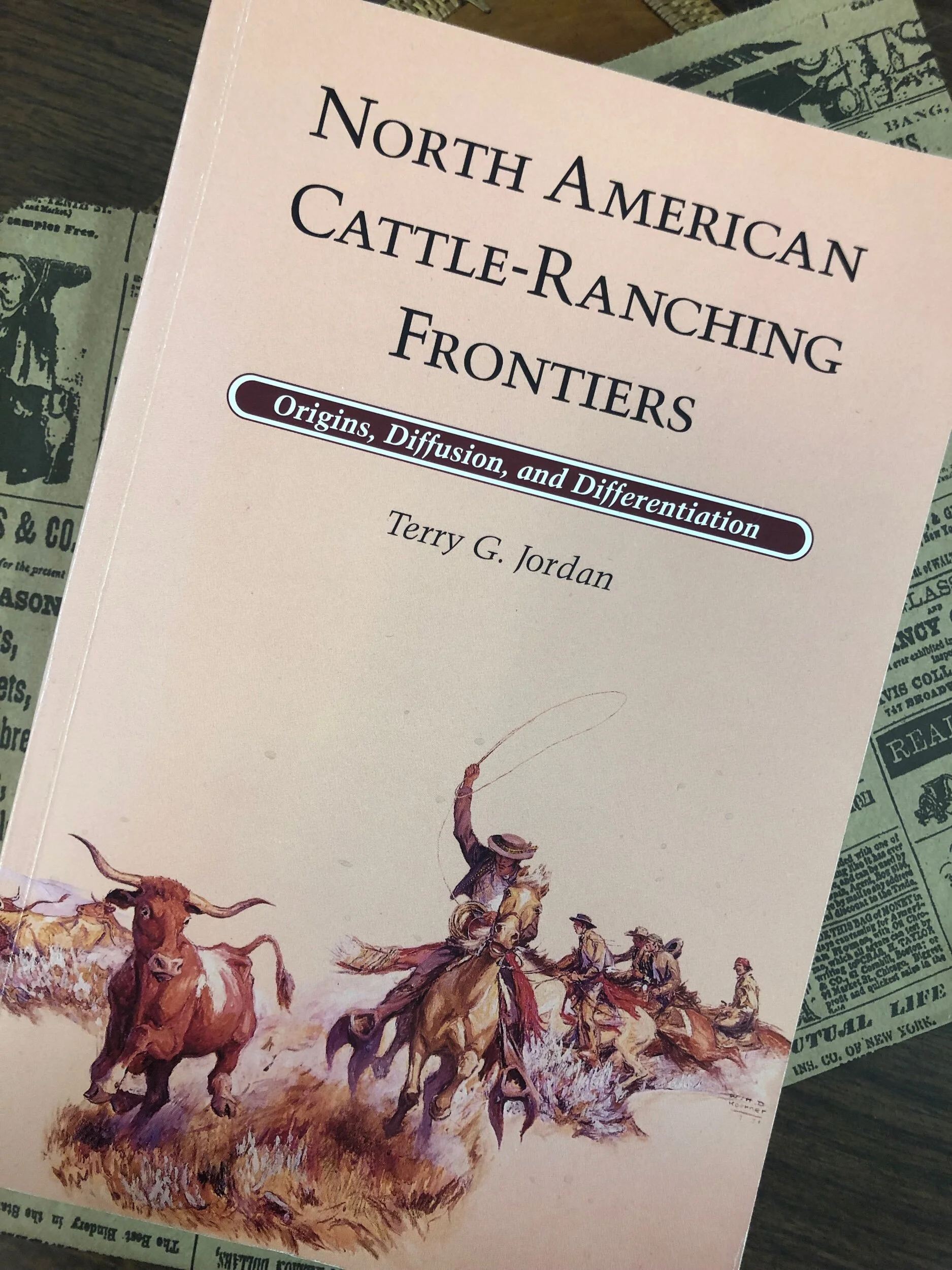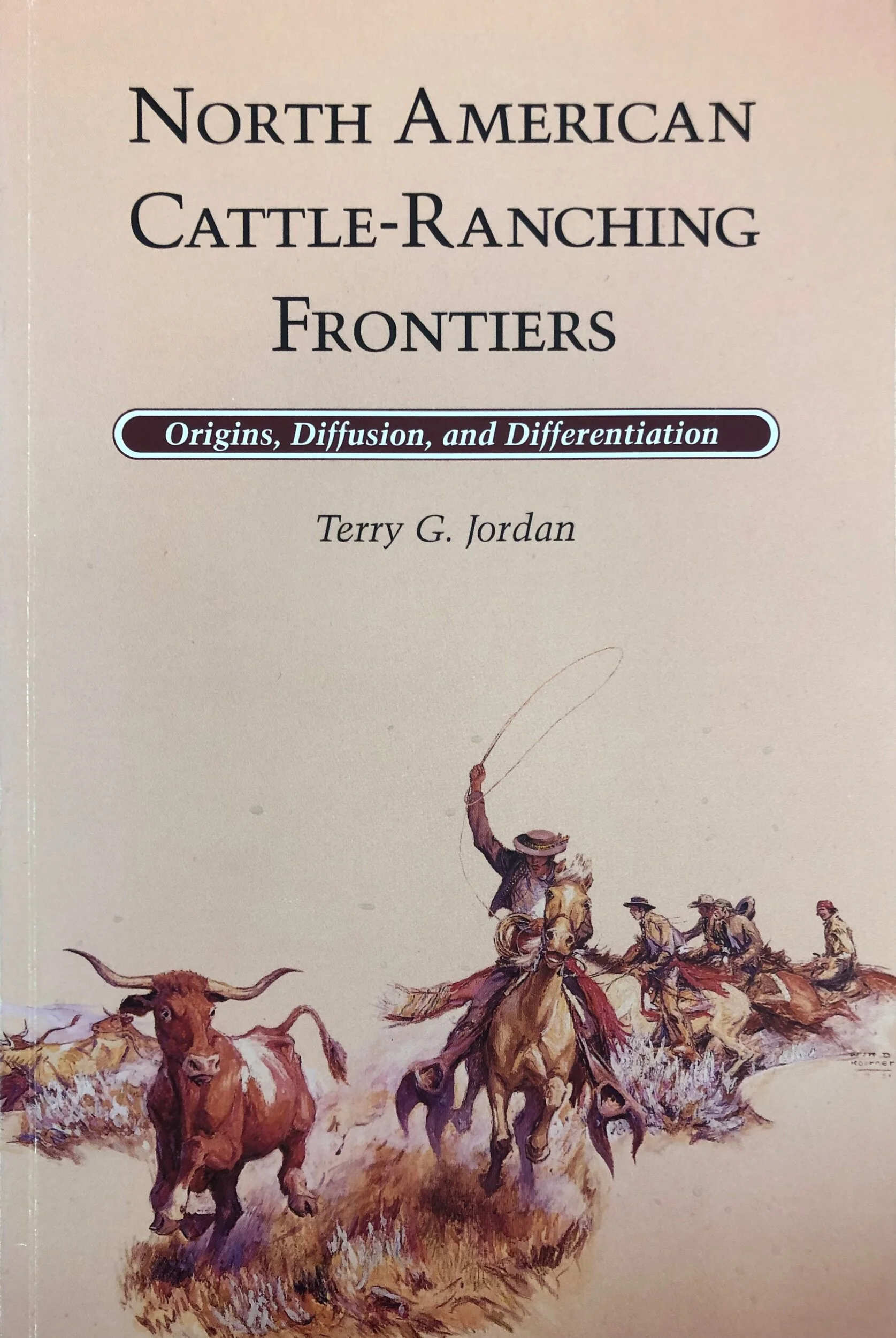North American Cattle-Ranching Frontiers
North American Cattle-Ranching Frontiers
Origins, Diffusion, and Differentiation
Terry G. Jordan
Hardcover
University of New Mexico Press: March 1, 1993
English
Page length: 456 pages
ISBN-13: 978-0826314222
Taken from back cover:
Cattle ranching in the Old World and New is reinterpreted in the pathbreaking study that both recasts the history of a well-known topic and is also truly original. Jordan begins by tracing how different cattle-raising cultures in Spain, the British Isles, and North Africa helps shape varieties of ranching in the New World. He then delineates the American adaptations of ranching beginning with European expansion into the Caribbean and then considers continued evolution in Mexico, the American South, and the West. By 1850, three distinct ranching cultures existed – Midwestern, Californian, and Texan. Jordan argues that over the next 50 years the Midwestern system triumphed over it’s two rivals through the West. In particular the role of Texas is depicted as less important than previously thought.
The re-interpretation of how ranching evolved in the New World is broad, including discussions of grazing and foraging and their relation to vegetation and climate — that is, cultural ecology — cultural diffusion, and local innovation. Above all, Jordan emphasizes place and region, illustrating the great variety of ranching practices.
About the author:
Terry G. Jordan holds the Walter Prescott Webb Chair in Geography at the University of Texas at Austin. He has written 10 books on aspects of historical and cultural geography.



